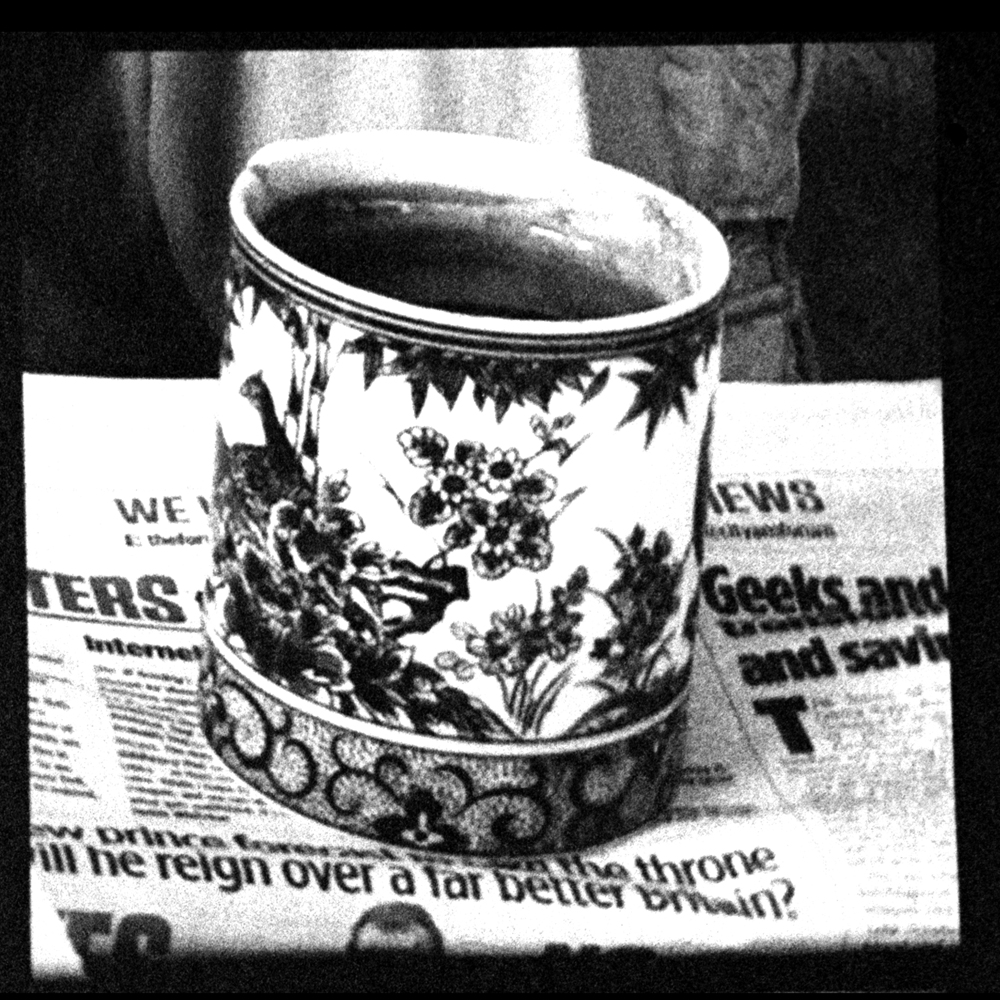Thanks to Metal ‘New Artist Network’, I’ve been able to develop a BW green tea-based film developer, which I’m naming Pritchettol in memory of Tony Pritchett, a man who liked green tea and doing experiments with computers and film.
To make one litre of Pritchettol Developer solution.
Start with 600ml of warm water.
It’s important that the following ingredients are added in this order:
Add 54 grams of Soda Crystals slowly – whilst mixing.
When fully dissolved add 16 grams of Vitamin C powder slowly – whilst mixing.
When fully dissolved add 80 grams of Matcha Green Tea powder slowly – whilst mixing.
When fully dissolved, top up with warm water to 1000ml and carry on mixing for about 2 mins.
If possible, strain this solution through a fine sieve – not filter paper, (it isn’t coarse enough).
Developer solution is now ready to use – do not dilute.
Heat up to 25 degrees C.
Dev time is 20′:00″ (continuous agitation)for Kodak Double-X negative film.

